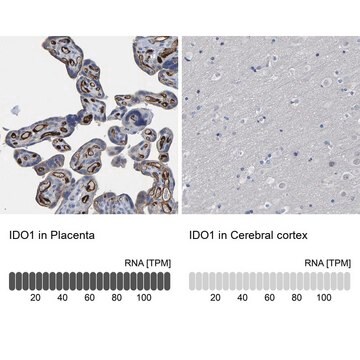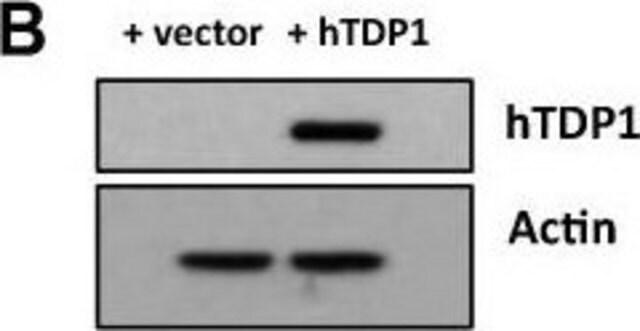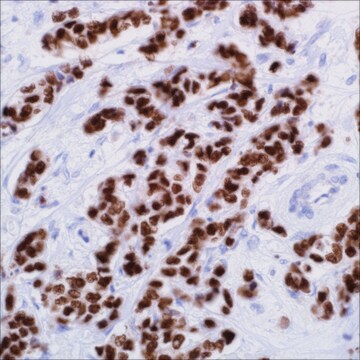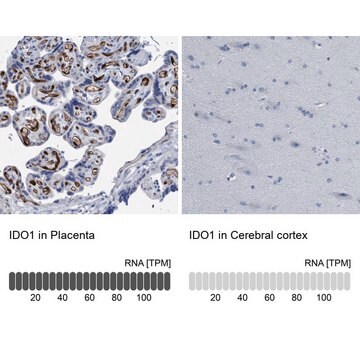MABF850
Anti-IDO-1 Antibody, clone 4B7 | MABF850
clone 4B7, from mouse
Synonym(s):
Indoleamine 2,3-dioxygenase 1, IDO-1, Indoleamine-pyrrole 2,3-dioxygenase
About This Item
Recommended Products
biological source
mouse
Quality Level
antibody form
purified immunoglobulin
antibody product type
primary antibodies
clone
4B7, monoclonal
species reactivity
mouse, rat
technique(s)
immunohistochemistry: suitable (paraffin)
western blot: suitable
isotype
IgG1κ
NCBI accession no.
UniProt accession no.
shipped in
wet ice
target post-translational modification
unmodified
Gene Information
mouse ... Ido1(15930)
General description
Specificity
Immunogen
Application
Immunohistochemistry Analysis: A representative lot detected IDO-1 immunoreactivity in acetone-fixed frozen colon tissue sections from wild-type, but not Ido1-knockout mice (Courtesy of Dr. Sunil Thomas, Lankenau Institute for Medical Research, Wynnewood, PA).
Immunofluorescence Analysis: A representative lot detected IDO-1 immunoreactivity in acetone-fixed frozen colon and epididymis tissue sections from wild-type, but not Ido1-knockout mice by fluorescent immunohistochemistry (Courtesy of Dr. Sunil Thomas, Lankenau Institute for Medical Research, Wynnewood, PA).
Western Blotting Analysis: A representative lot detected IDO-1 in epididymis and colon tissue extracts from wild-type, but not Ido1-knockout mice (Thomas, S., et al. (2014). J. Cell. Biochem. 115(2):391-396).
Immunohistochemistry Analysis: A representative lot detected IDO-1 immunoreactivity in multiple acetone-fixed frozen tissue sections from wild-type, but not Ido1-knockout mice, including epididymis, colon, heart, liver, and 4T1-metastasized lung tissue sections (Thomas, S., et al. (2014). J. Cell. Biochem. 115(2):391-396).
Quality
Immunohistochemistry Analysis: A 1:50 dilution of this antibody detected IDO-1 in mouse kidney tissue.
Target description
Physical form
Other Notes
Not finding the right product?
Try our Product Selector Tool.
Storage Class Code
12 - Non Combustible Liquids
WGK
WGK 1
Flash Point(F)
Not applicable
Flash Point(C)
Not applicable
Certificates of Analysis (COA)
Search for Certificates of Analysis (COA) by entering the products Lot/Batch Number. Lot and Batch Numbers can be found on a product’s label following the words ‘Lot’ or ‘Batch’.
Already Own This Product?
Find documentation for the products that you have recently purchased in the Document Library.
Our team of scientists has experience in all areas of research including Life Science, Material Science, Chemical Synthesis, Chromatography, Analytical and many others.
Contact Technical Service








